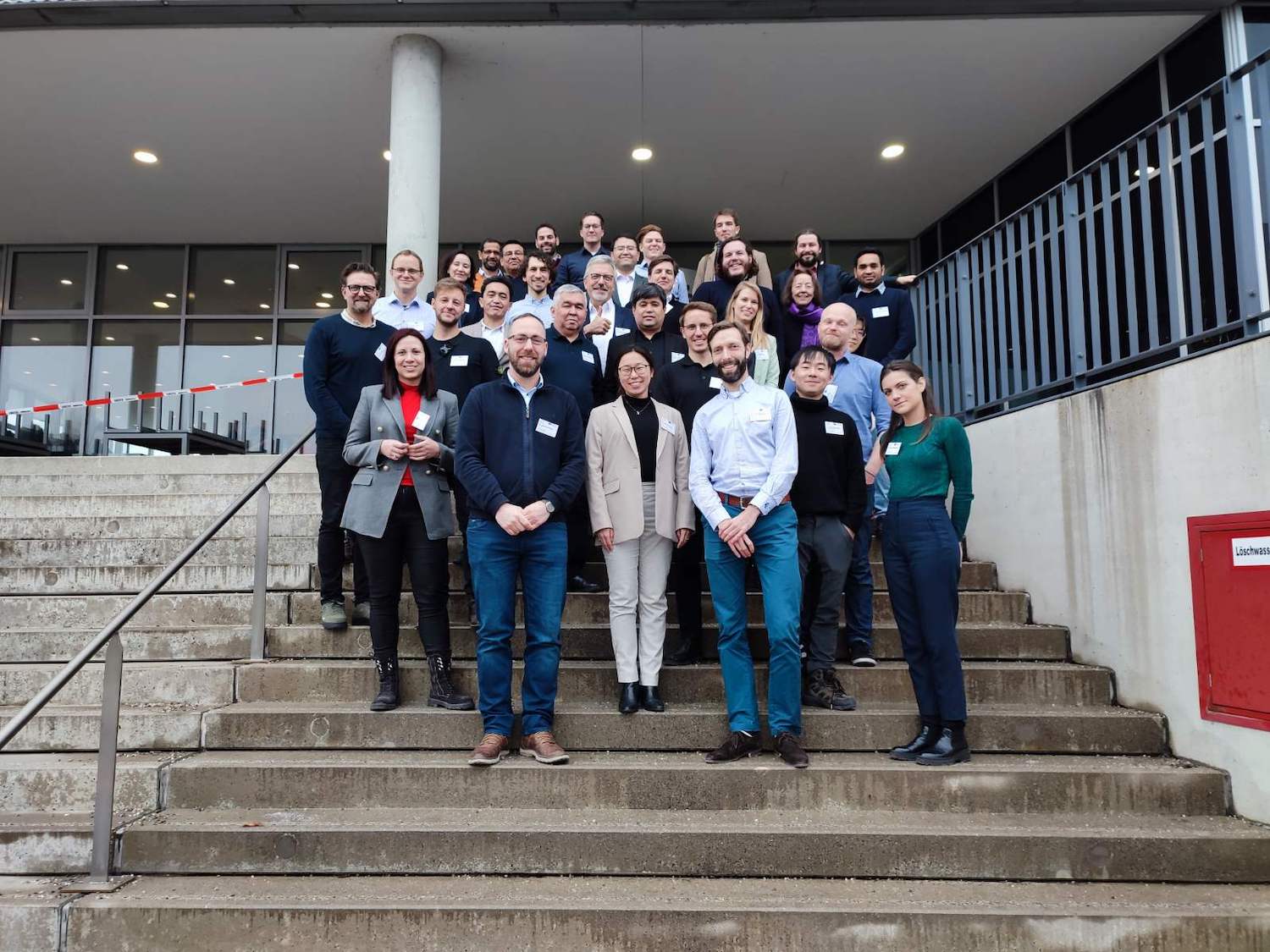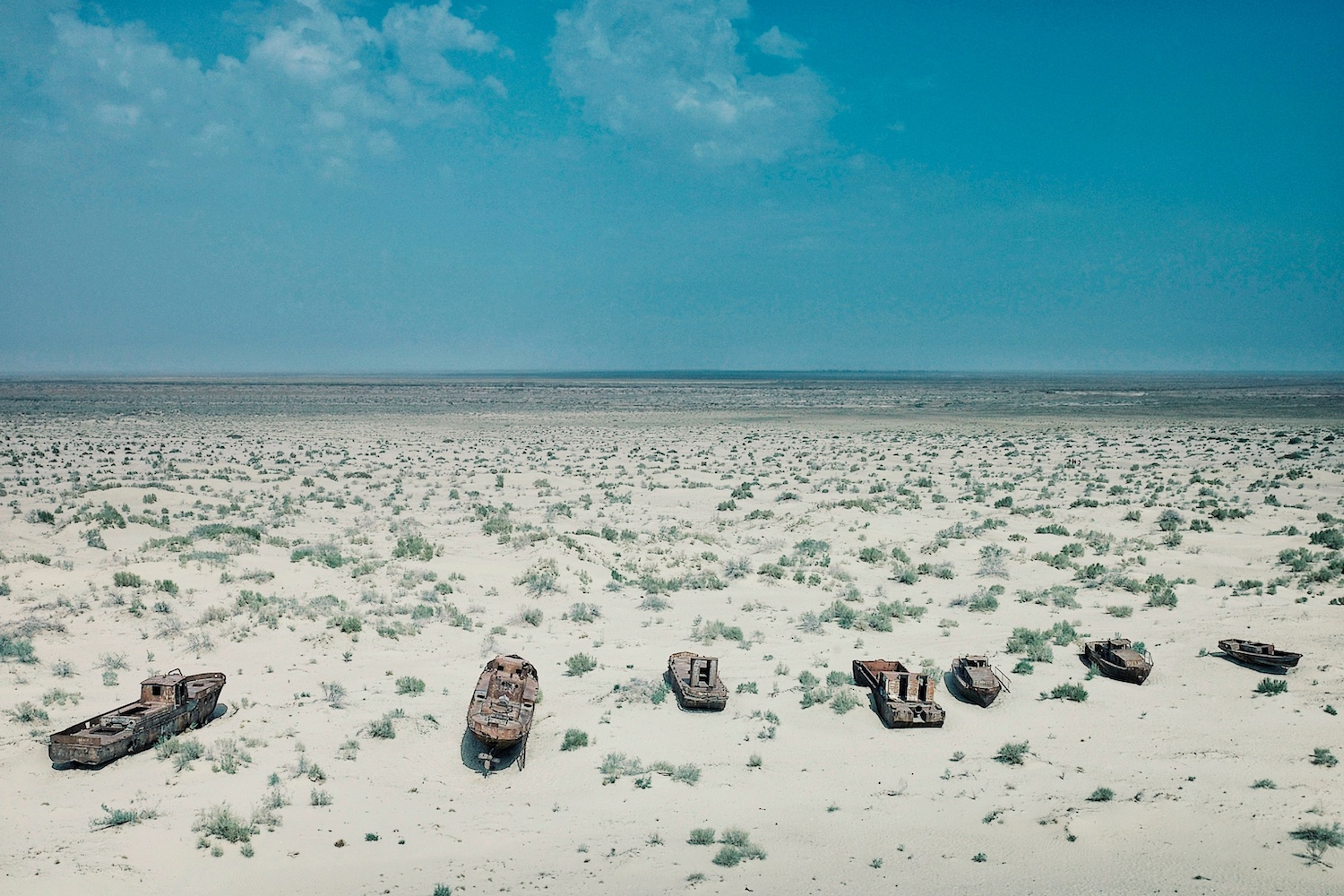In this article, with Maja Fišić of Serbian consultancy company, InoSens, we look at some of the problems around the Aral Sea. We focus on the Naryn and Kara Darya basins, important sub-catchments encompassed by the transboundary river basin of the Syr Darya. The Syr Darya, a primary tributary of the Aral Sea, stands as a vivid example of one of the most profoundly human-altered systems on our planet.

Maja Fišić
These basins have suffered one of the biggest ecological disasters of all time, and overexploitation of their water resources has seen this once-vast inland sea shrink to a fraction of its size. Maja explains some of the work underway to try and reverse its decline.
To rectify the problem, InoSens is working with Water Efficient Allocation in a Central Asian Transboundary River Basin (WE-ACT), an innovative European Commission Horizon Europe project. Their approach will help the various stakeholders in the region balance their needs and water usage. Gradually, climate-sensitive water allocation and management will help restore the Syr Darya river basin, an important shared resource for countless communities around the Aral Sea.
Time’s Neglect: An Environmental Disaster
The Aral Sea is widely regarded as one of the biggest man-made environmental disasters of all time. Over a few decades, this inland sea went from the fourth largest in the world to 10% of its former size. Beset by water conflicts and inefficient irrigation, the sea slowly dried up, affecting communities across this agricultural region and harming food security. When desertification set in, a once productive lake bed and complex, intertwined ecosystem now lay barren and dusty.
The main reason for this was agriculture, with water from the Amu Darya and Syr Darya rivers diverted to irrigate crops. Now, to compound the ecological disaster, the dried lake bed contributes to intense annual dust storms that affect agriculture and human health. With 33 million people in the affected area, this problem needs tackling before it becomes irreversible. Th Aral Sea is a prime example of water use conflict, where water is needed for irrigation, industry, drinking, and fishing, with international boundaries making agreement more difficult.
A number of initiatives are trying to reverse this damage and return the Aral Sea to as close to its previous healthy condition as possible. One of these is a ground-breaking water management initiative, the WE-ACT project. This innovative project, cofounded by the European Commission’s Horizon Europe program, will invest €5.2 million to the restoration of the transboundary river basin in Central Asia. It specifically targets the Naryn and Kara Darya catchments within the Syr Darya river basin, which span regions of Kyrgyzstan and Uzbekistan. The project will promote water efficient allocation and help communities share precious resources in the face of a changing climate.

The WE-ACT Consortium
WE-ACT: Trying to Undo the Damage
For many years, various governments and international organisations have tried to rectify the damage and even reverse the Aral Sea’s decline. However, with so many different actors and layers of government, although everyone understood what actions were needed, actually doing it proved difficult. With so many livelihoods and communities jostling for water, what approaches can bring everyone on board? How do you balance everyone’s needs with the action needed to save the Aral Sea?
Alongside the inexorable problem of climate change, the region faces a range of problems, notably population growth and rising demand for food, energy, and other resources. Trying to balance environmental protection with these needs is difficult when the changing climate affects the hydrology in Central Asia. To compound the issue, many of the rivers cross international boundaries and this brings politics into the debate. Creating a consensus between the various groups to find fair and balanced solutions becomes very important.
At its core, the WE-ACT project intends to bring people together, acting as a trusted intermediary and looking for common ground. Through the use of risk-aware planning and management, supported by data and technology, WE-ACT assigns value to water resources and empowers stakeholders to allocate scarce water resources effectively. As Maja noted:
“We had a huge stakeholder workshop, it was in Uzbekistan, with 70+ stakeholders in one room speaking all in different languages with translators present. What we saw is the huge commitment of them all, regardless of which country and which region they’re coming from. They’re really interested in seeing the results and the outputs of the entire process.”
To support water allocation, the WE-ACT project uses modern technology in the form of a state-of-the-art digital decision-support system (DSS). This sophisticated system uses real-time hydro-meteorological data and advanced analytics to help water resource managers make highly informed decisions and better balance water allocations. The data network covers flow, water availability, demand, and allocation in the area, using this for analytics and predictions.
Behind this sophisticated digital network lies knowledge and expertise that can use the data and analytic information for maximum effect. A robust monitoring system and supply chain for data captures how climate change is affecting the water in the region, specifically the Naryn and Kara Darya catchments that span Kyrgyzstan and Uzbekistan.
The Importance of Collaboration
The project is a collaboration between 13 partners from nine countries, including the Netherlands, UK, Spain, Serbia, and Belgium. Building a team that has all of the skills and experience required is the foundation of such a wide-ranging project. Understanding the importance of collaboration, Maja pointed out that:
“The project gathers a group of organisations with different backgrounds. During the application process, we made sure that the team is a really targeted, well-coordinated and carefully chosen group with expertise in many complementary areas.”
“ICT and decision support systems were the heart of our project, but we turn to water management, climate change, different modelling aspects, and hydrometeorology. These high-level activities were crucial for the implementation of the project.”
Importantly, Maja is careful to point out that the project had to include those actually affected, taking on board their ideas and concerns:
“We also gathered, and this is crucial for our activities, end users from the two case study countries, Uzbekistan and Kyrgyzstan. And, just now, our partners from the Netherlands are there on a field visit. They are having really careful conversations, again, not only with those two governmental partners, but also with all other stakeholders who are involved in planning management in the location of water resources in the two countries.”
From this collaboration emerged a decision support system that promises to help local communities and the environment in the face of climate change.
What is WE-ACT?
WE-ACT’s DSS for the Syr Darya glacial river basin uses an innovative water information system to capture data. This helps resource managers alleviate water stress for local communities and other users by balancing the allocation of water resources in the face of a changing climate.
The project will help to set tariffs correctly with the aim of reducing water footprints, stopping waste, and promoting efficient water use, especially for agriculture and hydroelectric energy.
“We have this whole set of activities that deals with financing mechanisms. So, again, the toolbox, the policy impact, and this level of financing. How much the water costs and how these costs should be recalculated. We will rethink the value of different tariffs for our stakeholders based on their incentives and also incentivizing the decreased usage taking into consideration the availability of water. This is still in the planning phase, but our future financing mechanisms will be able to take into account different levels of needs.”
However, these notable aims rely on real-time accurate data alongside an understanding of water policies and how to prioritise usage. As Maja notes, this will underpin the decision support process:
“Again, everything we collect will also be validated in different levels and we make sure that we have the correct stakeholders double check and verify the information received from various sources. Basically, the idea is to have a collective decision making that is, first of all transparent, so that for the different levels of decision making, we know who is responsible for each part and then enable a fair process.”
What does the Decision Support System Include?
The data supply chain helps to develop policies and use tariffs to reduce water footprints and encourage efficiency. It uses real time monitoring, demand, availability, and in-depth modelling with machine learning to build a model and create predictions. With cloud architecture and data warehousing, Maja believes that WE-ACT provides a comprehensive toolbox with enough information to support decision making.
“The system is a toolbox of services with the different levels of access rights, and different levels of functionalities. And it basically combines different sources of information in order to be able to deliver proper output. When referring to sources of information, I am specifically referring to field sensors and satellite data, which provide crucial data for analysis and monitoring purposes. This huge data will be collected over the four years of the project across as the two targeted countries. That will be later on be used for modelling to give precise projections.”
The system includes a number of clever elements, part of an integrated methodology with three main components. The first provides strong foundations for understanding water allocation by providing data and information. It includes measurements and sensors to improve data availability and build an integrated model covering water availability, demand, and allocation. It can use this to generate future scenarios for water management that incorporates climate risk.
The second helps to actually use this information to engage stakeholders, develop cross-border policies to share the benefits, and create finance mechanisms that promote better water allocation and use. The final component is the technology, including a data warehouse and modelling system alongside a digital skeleton of the DSS.
“Our final solution is a robust ICT tool toolbox, I would say with different functionalities for diverse levels of decision making, from end users to policy, to policy in government, and also the private sector. So, again, in order to have this robust toolbox, we had to make sure in the beginning that we actually gather all these different voices in our core team.”
Repeat and Reuse: Creating a Template
Of course, the next stage is to take the knowledge gained and apply it anywhere else there is conflict with shared water resources. Maja wants to use the technology to promote cooperation in Europe, focusing on resolving water-related challenges and fostering sustainable water management practices, for example:
“Our system’s replicability makes it an ideal model for other regions, particularly for transboundary areas such as the Danube and Douro River basins in Europe and neighbouring countries. We will collaborate closely with water management authorities, openly sharing our experiences and knowledge to empower other regions and help them benefit from the advantages and benefits offered by our system.”
“Our ultimate goal is to create a network of interconnected digital systems throughout Europe, driven by the collective support and investment of various stakeholders, including funding bodies, water management authorities, and private entities. This replication effort will not only enhance water management practices but also lay the foundation for greater sustainability across the continent. By engaging multiple stakeholders and fostering collaboration, we aim to build a robust and inclusive system that benefits the entire region.
Overall, WE-ACT promotes sustainable and fair water allocation via an innovative DSS. It uses data and brings together stakeholders at all stages, from planning to policy, helping to build cross-border agreements and preparing regions for climate change. With flexible solutions and new financing mechanisms that capture the true value of water and its social and environmental importance, the future is bright and built upon collaboration. As Maja noted, with some optimism:
“We are really committed to opening our system and tailoring it to the specific needs of regions, placing it where it is truly needed. Our aim is to accommodate diverse interests and perspectives, recognizing that it may not always be an easy task. While it may be a long road ahead, we remain hopeful and optimistic about the positive outcomes we can achieve.”
Find out more about this important project at Inosens.rs
Get in touch to submit an article to H2O Global News.







